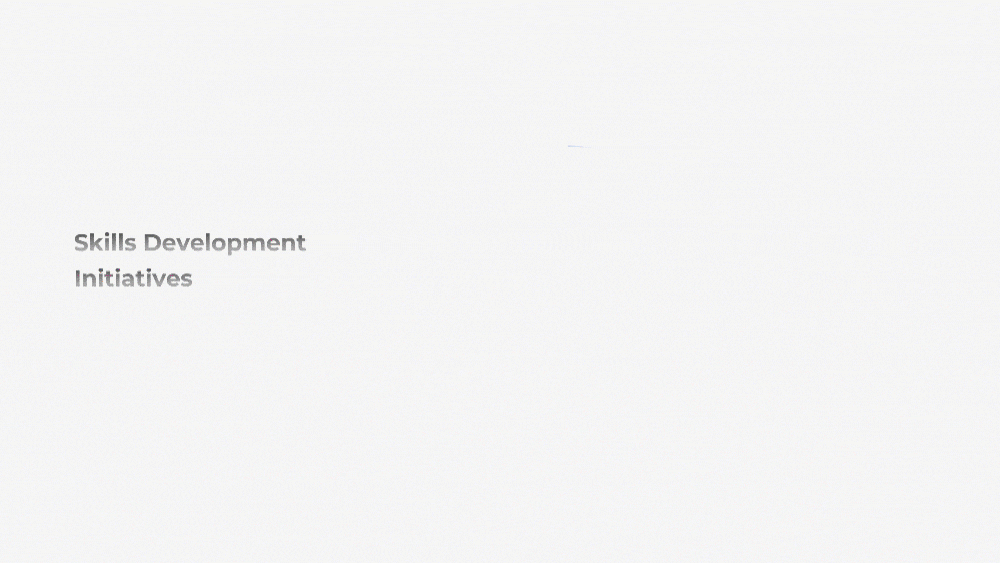Synopsis
Want to attract top talent and motivate your team to achieve their best work? Use this Team Development presentation to properly structure skills training, coaching and mentorship initiatives, communicate benefits of learning & development, and ultimately get the most out of any talent pool. Let's see how these tools can be used to strengthen a team and keep employees fulfilled.
Skills development scorecard
The Skills Development Scorecard can be used to track the current standing and eventual progression of a single team member or a whole team. Skills are categorized and then ranked according to Quality and Competency. Quality refers to the quality of work produced on a regular basis. Think about this as "how much care does your team put into their craft?" Competency refers to the capability to fulfill a given role's main functions. Useful measures might range from technical knowledge to soft skills. Say you run sales for a software company. Skills categories on this scorecard could be product knowledge and CRM. Color in the boxes as employees progress through the levels. (Slide 3)
9-Box skills grid
The 9-box grid plots team members according to two criteria: Potential and Performance. Each grid shows the exact head count of how many employees fall into the respective category, and what percentage of the entire team these employees make up. You can also translate this data into the bubble chart on the right. (Slides 4-5)
- In the top-right square are your Star employees, who demonstrate both high career potential and perform consistently well.
- In the bottom-left square are your Risk employees. They don't show much potential and also produce the lowest-quality work.
- For the most part, the rest of your staff will fall somewhere in between these two extremes.
Organizational DEIB
Employees, both current and prospective, will want to see what actions the company is taking to make them feel more welcome and included. Additionally, more consumers are also considering companies' internal diversity and inclusion practices as they make purchase decisions. To illustrate the progress your organization is making towards DEIB, or Diversity, Equity, Inclusion, and Belonging, use this slide to highlight the positives. (Slide 9)
In this hypothetical scenario, of the 108 director-level employees at the company, 46 are women, and 31 are BIPOC. While there's no limit to how equitable an organization can be, consistent check-ins and reportings of DEIB metrics can encourage everyone to be more aware and accountable.
Learning and development (L&D) budget
Even for the most outstanding employees, there's always a mixture of hard and soft skills that can be continuously improved. So how do you approach teaching them the right things? With this Learning & Development Budget graph, plot each development area in an easy-to-understand snapshot. Use it to properly allocate resources and finances for the betterment of your team. Focus on the highest-value-adding skills for your workers. And use this tool to reach an exact dollar amount to spend on L&D initiatives. (Slide 17)
Of course, this budget breakdown differs between different companies, as each has their own strengths and weaknesses. And even within the same company, L&D needs evolve over time. So it's best to re-evaluate your budget allocation periodically to make sure the money is being spent in the right areas.
Understand what your priority content and message should be. Think about how to get important brand info across, while also addressing customer concerns? If you're a shipping company, perhaps you're required to move toward carbon-neutrality by new legislation. A large portion of your customers may also care about the environment. So that's a win-win.
Corporate mentoring program agenda
The Corporate Mentoring Agenda isn't just to schedule mentoring sessions. It's also used to clarify the group dynamics and expectations of each session, so you can uniquely target each staff member.
Those being primed for a C-suite position might be best served in a 1-to-1 setting with top executives. Conversely, those learning teamwork could benefit from a full group or core pods session. Using this tool, craft a mentorship agenda in its entirety: Types of training, group size, schedule, skills to develop, and more. (Slide 15)
Skill development initiatives
Earlier, we talked about the L&D Budget chart and how its financial implication. Here, the Skills Development Initiative tool lets you visualize the qualitative focus of learning programs. In this example, the chart implies a program that is training someone to be a manager. In this case, the two initiatives that carry the most weight are Management and Leadership Training, and Professional Certification. As always, you can edit this tool to adjust for any kind of program. Whether it's to upskill entry-level workers, or to educate the workforce about diversity and inclusion. (Slide 14)
Mentorship outcomes
We've discussed mentorship and coaching programs and how they can be structured. But how can you show your team why such initiatives are a good thing? To advocate for any corporate endeavors, numbers, especially financial numbers, are your best ally. To get major stakeholders on board, present the positive financial outcomes of team development programs to prove your point. (Slide 16)
With every employee who leaves, not only is the overall team productivity compromised, but the resources needed to hire a suitable replacement is costly. So businesses that prioritize learning and development have lower turnover, and this directly translates into cost savings.




































